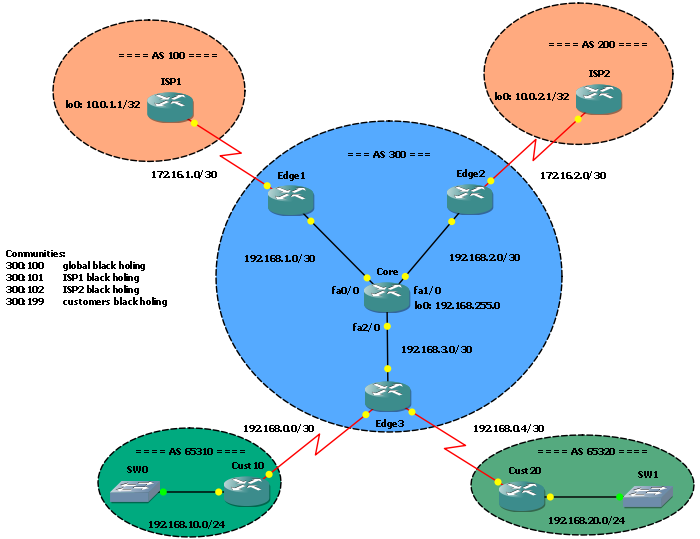This post is part of a series about “ISP Security Tools and Techniques“; in this series I talk about some (I think) useful practices:
1. Remote Triggered Black Holing
2. BGP Customer triggered black holing
3. BGP triggered rate limiting and less-than-best-effort (LBE) with QPPB
4. Source-based RTBH with Unicast Reverse Path Forwarding (uRPF)
Stay tuned! 😉
Today I drew inspiration from a brand new RFC to add a post to this little series: RFC-5635, Remote Triggered Black Hole Filtering with Unicast Reverse Path Forwarding (uRPF).
Especially, I would like to focus on section 4 of this RFC, Source Address RTBH Filtering.
To fully understand this post I would suggest to read my previous post Remote Triggered Black Holing.
